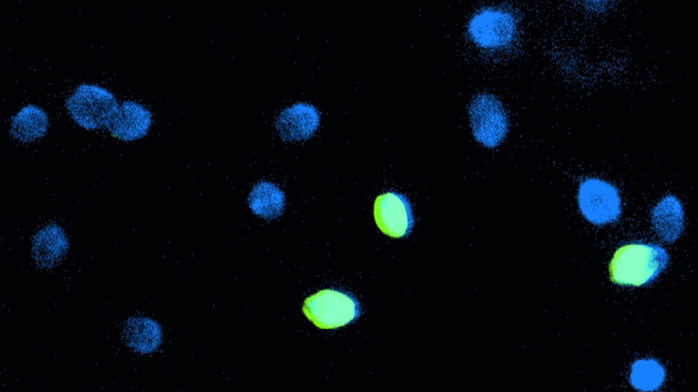DNA fragmentation TUNEL assay
The DNA fragmentation assay (TUNEL) is a technique that supplements seminograms in studies of the male factor

How can we help you?
Non-obligation guidance
What does it entail?
The test measures the status of spermatozoa DNA that is located in the sperm head and constitutes the individual's genetic makeup. In certain circumstances, DNA can be fragmented and it can make having a successful pregnancy complicated.
There are different techniques for assessing sperm DNA integrity. They include the TUNEL assay (Terminal Transferase dUTP Nick End Labelling) that is performed by our clinic, the sperm chromatin structure assay, the comet assay and the sperm chromatin dispersion test (SCD).
Collecting samples
Samples must be obtained by means of masturbation following abstinence from sexual intercourse for between 3 days and 5 days.
Semen must be collected in a sterile container that is provided by our clinic or that can be bought at a chemist (sterile urine sample containers).
Samples must be delivered within 45 minutes at most. We recommend providing samples in the rooms designed for this purpose at our clinic in order to avoid complications of any kind.
When should it be performed?
Scientific literature indicates that when sperm DNA fragmentation levels are high there is an increased probability of implantation failure in transferred embryos; abnormal embryo developments that lead to poor quality embryos; and even miscarriages during later stages of pregnancy.
Depending on the extent of the fragmentation and on oocyte quality (a factor that has a direct link to the female partner’s age), lesions can be repaired by the oocyte that has been fertilised by the spermatozoon. The fact that the oocyte’s ability to make repairs decreases with age and the sperm DNA fragmentation rate can increase as a man ages might be a partial explanation for the significant decrease in pregnancy rates that is observed in couples of an advanced age.
Therefore, taking this test is advisable in the following cases:
- Sterility of unknown origin (after having ruled out a pathology in the female partner);
- Recurrent fertilisation or implantation failure;
- Retrieval of poor quality embryos following a cycle of IVF/ICSI;
- Recurrent pregnancy loss;
- Male partner of an advanced age.
Normal levels
Fragmentation rates under 20% in fresh semen and under 15% in capacitated semen are considered normal values.
Causes of DNA fragmentation in sperm
There are several reasons for breakages in spermatozoon DNA and they include the following:
- Inefficient selection and elimination of damaged spermatozoa;
- Failures during spermatozoa maturation at epididymis level;
- Exposure to chemotherapy, radiotherapy or environmental toxic substances;
- Periods of high body temperatures or exposure to high temperatures;
- Varicocele;
- Exposure of spermatozoa to free radicals both at testicular level (in the case of severe or chronic inflammation due to an infection) and at post-testicular level.
What needs to be done when DNA fragmentation is elevated?
Some published studies have found that antioxidants have a positive impact on DNA fragmentation. Therefore, administration of oral antioxidants (vitamins C and E) can reduce fragmentation in some cases.
In cases where decreasing the extent of fragmentation is not possible despite antioxidant treatment, the option of obtaining spermatozoa directly from the testicle can be considered. The explanation for this is that fragmentation in these spermatozoa is lower than in spermatozoa obtained from ejaculate.